International Journal of Astronomy and Astrophysics
Vol. 3 No. 2 (2013) , Article ID: 32737 , 16 pages DOI:10.4236/ijaa.2013.32016
A Brief Study of the Universe
Department of Mathematics, Jadavpur University, Kolkata, India
Email: *mukerjisudeshna@gmail.com
Copyright © 2013 Subir Kumar Basu Thakur, Sudeshna Mukerji. This is an open access article distributed under the Creative Commons Attribution License, which permits unrestricted use, distribution, and reproduction in any medium, provided the original work is properly cited.
Received January 22, 2013; revised February 24, 2013; accepted March 4, 2013
Keywords: Cosmology
ABSTRACT
In the present study, an oscillatory model of the universe is proposed wherein the universe undergoes a sequence of big bang, expansion, contraction, big bang—repeated ad infinitum. The universe comprises of a “World” and an “Antiworld” in both of which matter operates in the positive time zone and antimatter in the negative time zone. Big bang is predicted as the violent encounter between matter and antimatter. It is suggested that antimatter has negative mass and is hugely abundant. It is also shown why it is extremely rare in spite of its abundance. It is predicted that a built in transformation converts matter to antimatter and vice versa. Finally, it is established that symmetry between matter and antimatter in the universe is maintained throughout.
1. Introduction
1.1. Methodology
This paper presents a study of the universe using a new method, to be named as the “Method of Indices”. It is named so, because it defines and evaluates the “Growth Indices” (briefly, “Indices”) of scalars, at play in the universe, links these indices to the Hubble’s Constant, and subjects various equations of Physics and Cosmology to unveil new cosmological truths.
The index of any scalar,  , appearing in an equation of physics or cosmology, is denoted by
, appearing in an equation of physics or cosmology, is denoted by  and given by
and given by
 (1)
(1)
where , t denoting time.
, t denoting time.  in the denominator ensures that
in the denominator ensures that  has the same sign as that of
has the same sign as that of .
.
So, 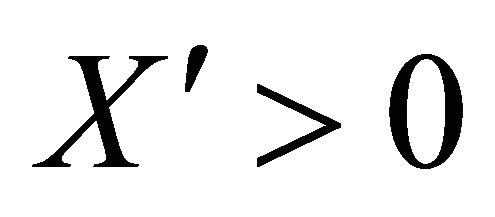 and
and  indicate respectively the growth and decay of
indicate respectively the growth and decay of 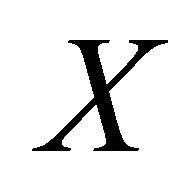 with advancing time.
with advancing time. 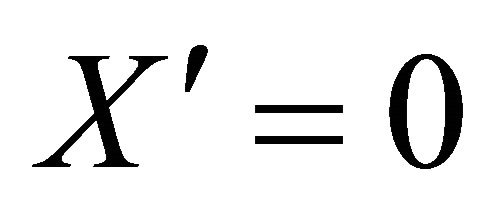 marks
marks  as a universal constant, a constant over the eons.
as a universal constant, a constant over the eons.
The method is now described briefly. Using rules, given in Section 1.3, of operations involving indices, an equation of physics or cosmology can be transformed into a linear equation in the indices of scalars, which constitute the former equation. Any carefully chosen set of such linear equations, with at least one among them involving the Hubble’s constant, is solvable for the unknown indices. Indices, thus obtained, reflect the effect only of the Hubble’s expansion. Each of these indices promotes an equation, which links the corresponding scalar to time. The promoted equation will enable scientists to evaluate the scalar for any chosen time, provided its value for any other time is known.
Next, the known constants of physics and cosmology are constants for the present epoch, but may or may not be so over the eons. So, a prerequisite for the application of the method of indices is set up as follows.
“Each scalar except the velocity of light , be it a constant or not, is to be regarded from the outset of the analysis as varying with time till the analysis marks it as a constant for all eons. For a scalar
, be it a constant or not, is to be regarded from the outset of the analysis as varying with time till the analysis marks it as a constant for all eons. For a scalar  to be so,
to be so,  must be zero.”
must be zero.”
Though the Hubble’s law plays a pivotal role in this method, it itself is subjected to analysis by this method. And for this,  , the Hubble’s Constant of this law, is replaced by
, the Hubble’s Constant of this law, is replaced by , which is considered as varying with time,
, which is considered as varying with time,  being the value of
being the value of  at the present epoch.
at the present epoch.
1.2. Definitions and Notations
1) A spatial sphere will be referred to as a “3-sphere”.
2) 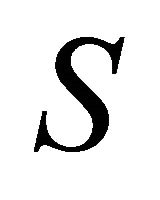 will denote the radius of the three sphere of the universe.
will denote the radius of the three sphere of the universe.
3)  and
and  will denote the mass of matter and antimatter respectively.
will denote the mass of matter and antimatter respectively.
4) The generalised scalar, denoted by , will represent all scalars individually, when such situation arises.
, will represent all scalars individually, when such situation arises.
5) The constants of integration in all equations will be denoted by 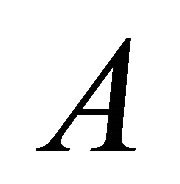 without suffices and must not be considered as equal dimensionally or otherwise.
without suffices and must not be considered as equal dimensionally or otherwise.
6) Scalars at  and
and  (present epoch) will have suffices “i” and “0” respectively.
(present epoch) will have suffices “i” and “0” respectively.
7)
 (2)
(2)
8) The Hubble’s Law states that galaxies move away from an observer with speeds , directly proportional to their respective distances
, directly proportional to their respective distances  from the observer i.e.
from the observer i.e.
 (3)
(3)
where  i.e. the Hubble’s Constant. Now, as
i.e. the Hubble’s Constant. Now, as  and
and  is to be replaced by
is to be replaced by  (as proposed in Section 1.0.1), then
(as proposed in Section 1.0.1), then  is the Hubble’s Law which can now be written in the following new form:
is the Hubble’s Law which can now be written in the following new form:
 (4)
(4)
9) In all numerical calculations, following values of the Gravitational Constant (G), the Hubble’s Constant (H) and the velocity (c) of light for the present epoch will be used



1.3. Rules of Operations for the Indices
Rules of operations for indices of two positive scalars,  and
and , with respect to positive time, are provided below. Whenever used,
, with respect to positive time, are provided below. Whenever used, 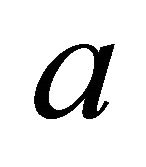 will denote a positive real number. The rules can be extended to any number of positive scalars. Higher order indices also exist, an example will be provided in Subsection 4.2.
will denote a positive real number. The rules can be extended to any number of positive scalars. Higher order indices also exist, an example will be provided in Subsection 4.2.
1) If  and
and 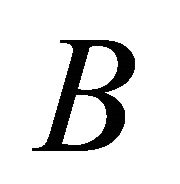 are of the same type,
are of the same type,
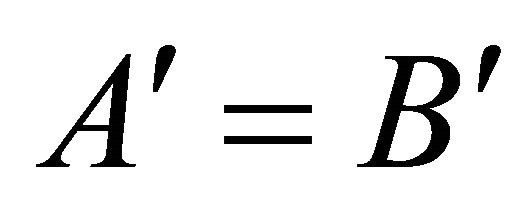 (5)
(5)
But, 
2)
 (6)
(6)
3)
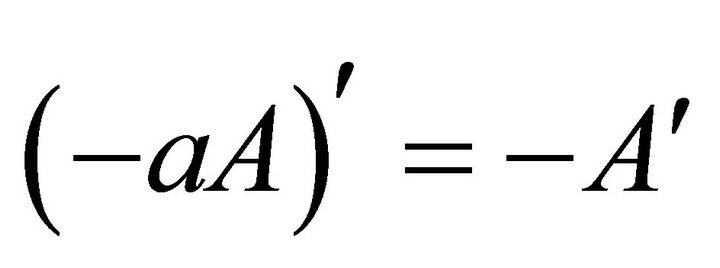 (7)
(7)
4)
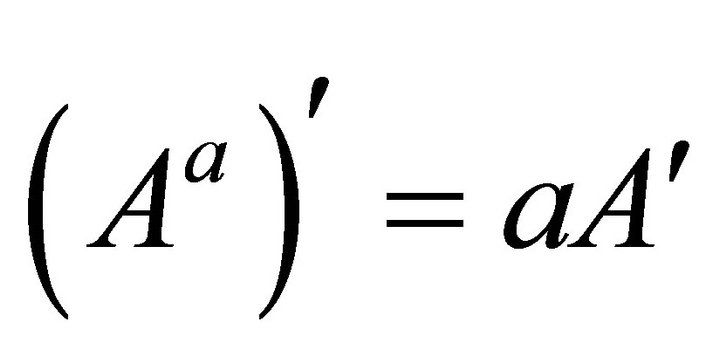 (8)
(8)
5)
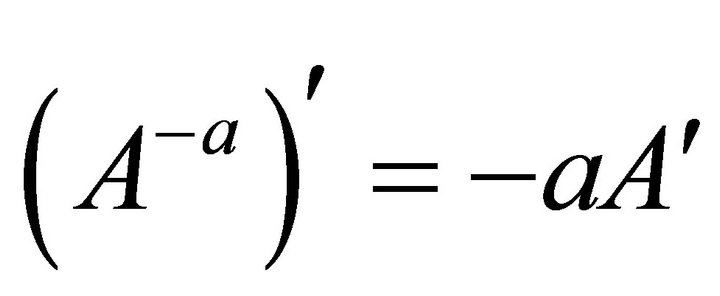 (9)
(9)
6)
 (10)
(10)
7)
 (11)
(11)
8)
 (12)
(12)
9)
 (13)
(13)
10)
 (14)
(14)
11)
 (15)
(15)
12) For ,
,
 (16)
(16)
2. Analysis
2.1. Hubble’s Law
Since 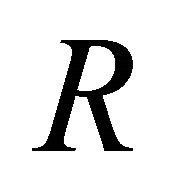 and
and  are of the same type, both being lengths, by rule 1 of Subsection 1.3, Equation (4) is written as [1]
are of the same type, both being lengths, by rule 1 of Subsection 1.3, Equation (4) is written as [1]
 (17)
(17)
As ,
,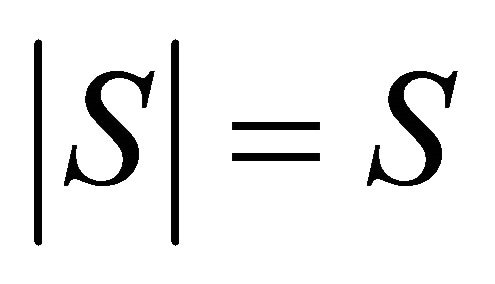 ; and so,
; and so,  , whence Equation (17) becomes
, whence Equation (17) becomes
 (18)
(18)
So,

If
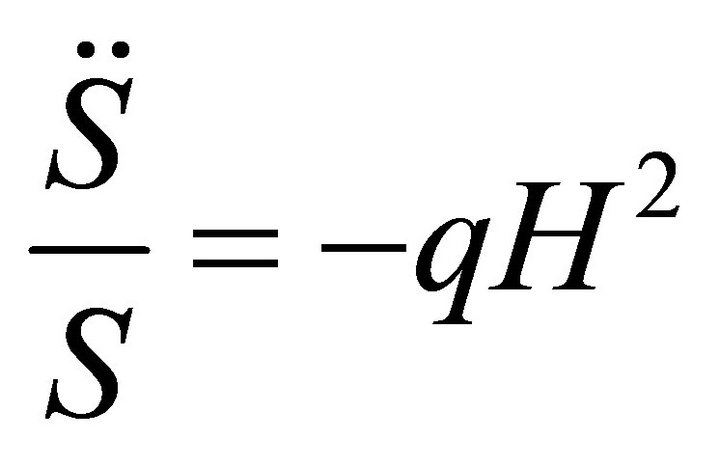 (19)
(19)
then
 (20)
(20)
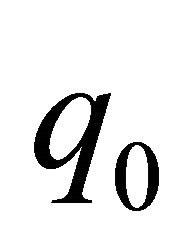 , the value of
, the value of  at the present epoch, is the ‘deceleration parameter’. As
at the present epoch, is the ‘deceleration parameter’. As ,
,  , and so by Equation (20),
, and so by Equation (20),  , whence
, whence
 (21)
(21)
Next, as the universe is expanding, 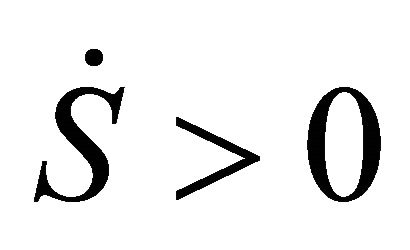 , and so,
, and so,
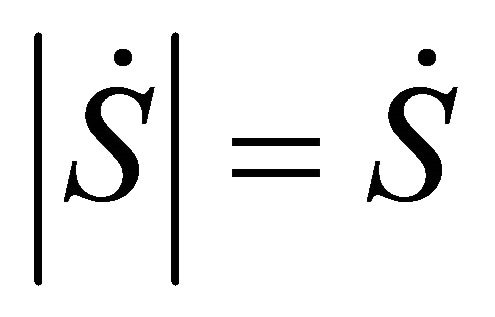 . Then,
. Then,  , whence
, whence
 (22)
(22)
Also,  ,
,
 (23)
(23)
2.2. Friedmann’s Equations
The Friedmann’s equations for  complete with the “Cosmological Constant”
complete with the “Cosmological Constant”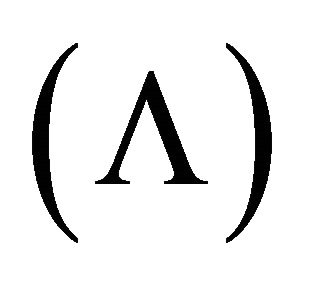 , are [2]
, are [2]
 (24)
(24)
 (25)
(25)
where 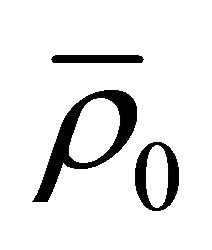 is the rest mass density of the universe st
is the rest mass density of the universe st . Let
. Let
 (26)
(26)
where  is a parameter, that sets the level of
is a parameter, that sets the level of . Then,
. Then,
 (27)
(27)
So, the Friedmann’s equations are rewritten as:
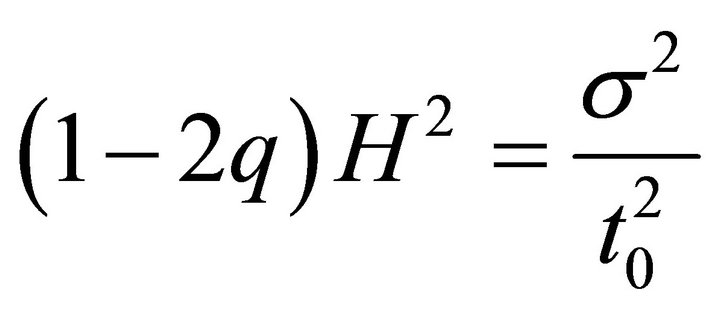 (28)
(28)
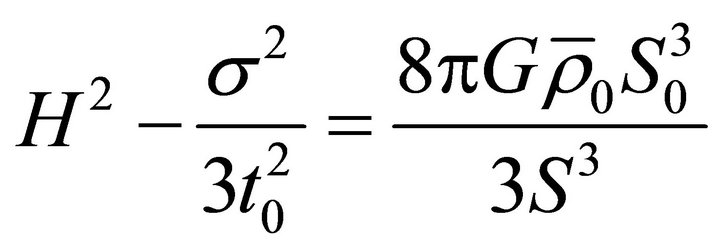 (29)
(29)
2.3. The Nature of 
Differentiation of Equation (28) with respect to time yields:
 (30)
(30)
Then, by Equation (21) this becomes:
 (31)
(31)
So,
 (32)
(32)
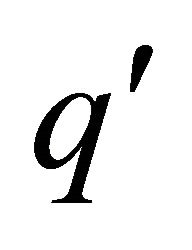 is non-zero except for
is non-zero except for  and
and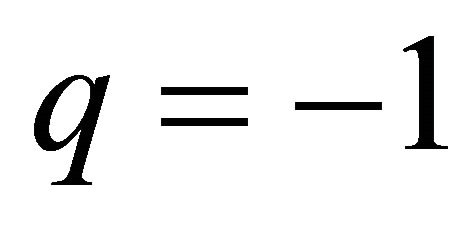 . So,
. So,  varies with time; in fact, it decreases from
varies with time; in fact, it decreases from  to
to .
.
2.4. More about the Friedmann’s Equations
Let two quantities,  and
and , be introduced below [2]:
, be introduced below [2]:
 (33)
(33)
 (34)
(34)
It will be proved in this very subsection that they vary with time. Their values,  and
and , at
, at 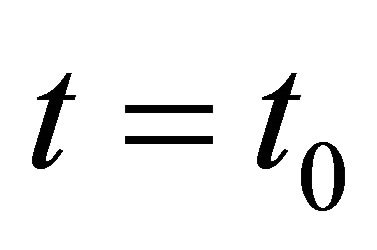 are the well known “Cosmological Constant Parameter”
are the well known “Cosmological Constant Parameter”  and “Density Parameter”
and “Density Parameter”  respectively.
respectively.
Equation (28) implies: , whence
, whence
 (35)
(35)
Next, Equation (29) implies: whence
whence
 (36)
(36)
Equations (35) and (36) together imply:
 (37)
(37)
Also, Equations (35) and (37) together imply:
 (38)
(38)
Now,  by Equation (2).
by Equation (2).
Since by Equation (23),  , then
, then
 (39)
(39)
Next, by Equation (39),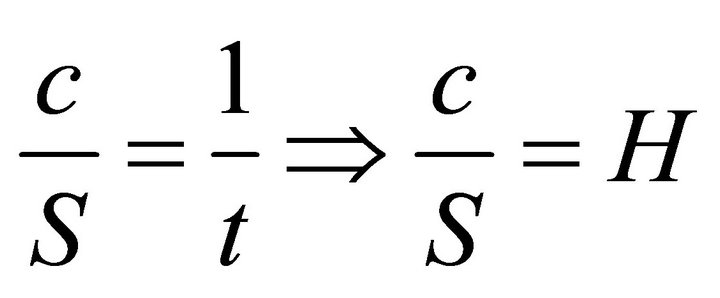 . Then,
. Then,
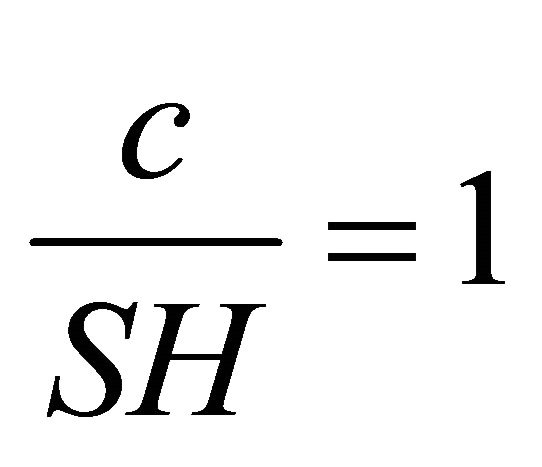 (40)
(40)
Then,
 (41)
(41)
Equations (33) and (41) together imply:
 (42)
(42)
By Equation (35) this becomes:
 (43)
(43)
Equations (35) and (37) respectively show that  and
and  vary with
vary with , which has been shown in Section 2.3 to be varying with time. So,
, which has been shown in Section 2.3 to be varying with time. So,  and
and  also vary with time.
also vary with time.
In fact, at , when
, when ,
,  and
and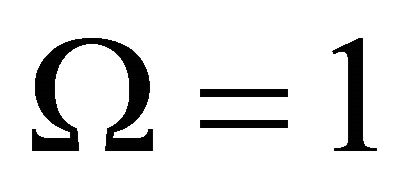 .
.
And, when ,
,  and
and .
.  means the universe is empty. So, the condition that the universe is empty is
means the universe is empty. So, the condition that the universe is empty is , or
, or , or
, or .
.
In de Sitter’s universe, . So, by Equation (33),
. So, by Equation (33), . So, de Sitter’s universe is empty.
. So, de Sitter’s universe is empty.
2.5.  as a Function of Time
as a Function of Time
Equation (31) is written as:
 (44)
(44)
By Equation (28) this becomes:


Integration of this yields:

where  is the constant of integration.
is the constant of integration.
Now,

So, ; then,
; then,

So,

At ; so,
; so, . Then,
. Then,
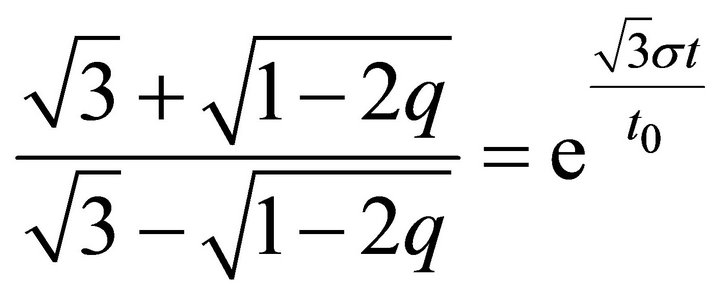
or,

whence
 (45)
(45)
Therefore,
 (46)
(46)
2.6. Evaluation of 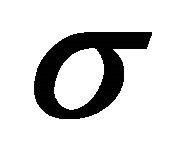 and
and 
At , Equation (45) becomes:
, Equation (45) becomes:

By Equation (43), this further changes to:

This equation is satisfied by:
 (47)
(47)
Then, by Equation (43),
 (48)
(48)
2.7. Evaluation of 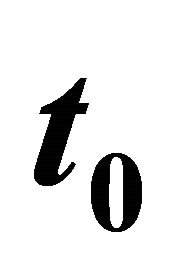 and
and 
 (49)
(49)
 (50)
(50)
2.8. Indices of Few Scalars from Equations of Physics
1) Index of mass of matter: Angular momentum of a body of mass , revolving in a circular orbit of radius
, revolving in a circular orbit of radius  with linear velocity
with linear velocity 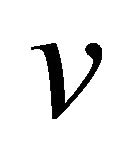 in a direction tangential to the orbit, is constant; i.e.
in a direction tangential to the orbit, is constant; i.e. , where
, where  is the constant angular momentum. Using Equation (13) this is transformed to:
is the constant angular momentum. Using Equation (13) this is transformed to: 
By Equations (5) and (22),  , and by Equations (5) and (17),
, and by Equations (5) and (17), . So,
. So, 
 (51)
(51)
2) Index of force: The centripetal force, acting on the revolving body, referred to in above, is .
.
Using Equations (3), (8), and (14) to this :

whence
 (52)
(52)
3) Index of gravitational constant : The gravitational force of attraction between two bodies of mass
: The gravitational force of attraction between two bodies of mass  and
and 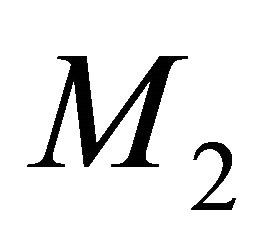 at a distance
at a distance  is:
is:
 , whence
, whence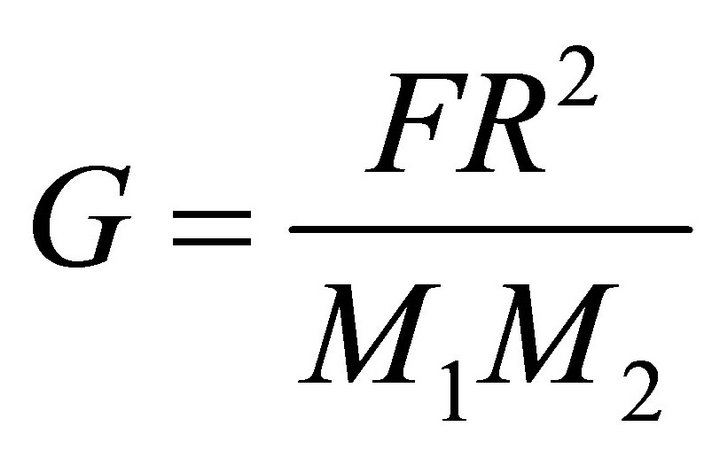 .
.
Then, ; or,
; or,  , whence
, whence
 (53)
(53)
2.9. A Few More Indices
1) Index of  for
for : For any
: For any 


Then,
 (54)
(54)
2) Index of : By Equation (16), as
: By Equation (16), as ,
,

Then, by Equation (54), . Now,
. Now,  whence
whence
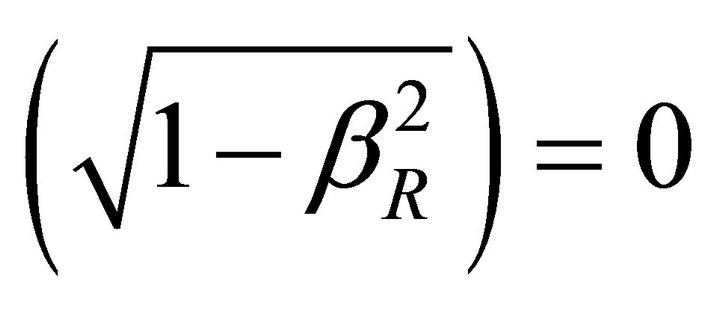 (55)
(55)
3) Index of :
:  (by Equation (6))
(by Equation (6)) 
As  and so,
and so, . Then,
. Then,
 So, by Equation (31),
So, by Equation (31),
 (56)
(56)
4) Index of :
:  By Equation (6),
By Equation (6), . Then,
. Then,  , as
, as 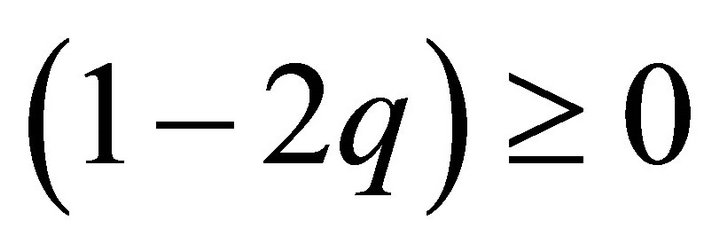 . Then, by Equation (31),
. Then, by Equation (31),
 (57)
(57)
2.10. Why Does the Universe Expand?
That the mass of matter in the universe is decreasing with advancing time is evident from the negative value of , obtained in Equation (51). In this decreasing process,
, obtained in Equation (51). In this decreasing process, 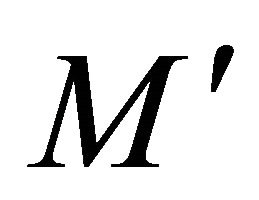 is the index of the residual mass, and
is the index of the residual mass, and  is that of the withdrawn mass (mass that ceases to be so). Equation (51) implies:
is that of the withdrawn mass (mass that ceases to be so). Equation (51) implies: . This proves that the withdrawn mass creates vacuum energy that promotes the accelerative expansion
. This proves that the withdrawn mass creates vacuum energy that promotes the accelerative expansion  of the universe. Next, Equation (34) can be written as:
of the universe. Next, Equation (34) can be written as:
 (58)
(58)
where  is the residual mass of the universe. The denominator has the dimension of mass. So,
is the residual mass of the universe. The denominator has the dimension of mass. So,  is the proportion of
is the proportion of  to
to , which represents the total rest mass (in nature). Then, the withdrawn rest mass is
, which represents the total rest mass (in nature). Then, the withdrawn rest mass is . So, the proportion of the withdrawn rest mass is:
. So, the proportion of the withdrawn rest mass is:

This shows that another measure of the withdrawn mass is , which is regarded as the driving factor behind the accelerative expansion of the universe.
, which is regarded as the driving factor behind the accelerative expansion of the universe.
Thus, the accelerative expansion of the universe is due to the vacuum energy created by the withdrawing mass, indicated by  and
and .
.
3. Antimatter in the Universe
3.1. Why Antimatter?
Antimatter is no less a reality than matter [3,4]. This fact alone is reason enough to undertake an investigation into the possibility of antimatter, playing a role, similar to that played by matter, in the workings of the universe. It’s extreme rarity has so long relegated it to insignificance.
It will be proved in Subsection 3.3 that antimatter is hugely abundant. It will also be explained, in the two subsequent subsections, why, in spite of its abundance, it is rare.
3.2. Dynamic Relation between  and
and 
If  is the mass of a number of particles, then the mass
is the mass of a number of particles, then the mass  of the same number of antiparticles is given by [5-7]:
of the same number of antiparticles is given by [5-7]:
 (59)
(59)
This implies

where 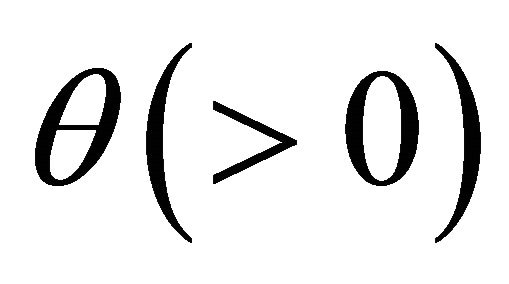 is a constant. Then,
is a constant. Then,  , whence
, whence
 (60)
(60)
This is the dynamic relation between particles and antiparticles. This is called so, because the ratio 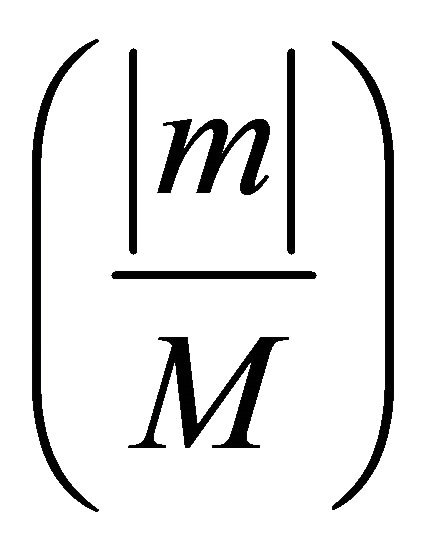 varies with time, as shown below.
varies with time, as shown below.

Then, 
3.3. Abundance of Antimatter
Friedmann’s Equation (34) has been rewritten in Equation (58), which is now changed below to it’s equivalent equation in indices.
 (61)
(61)
As  is the rest mass of the universe, it is given by:
is the rest mass of the universe, it is given by:
 where
where  is the mass of the universe, and
is the mass of the universe, and ,
,  being the average speed of mass. Now,
being the average speed of mass. Now,  , and
, and ; so,
; so, . For such
. For such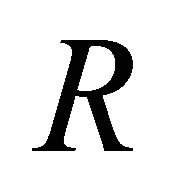 , and consequently for
, and consequently for ,
,  has been evaluated in Equation (55) as
has been evaluated in Equation (55) as . Then
. Then
 (62)
(62)
Equation (61) can be written as:
 (63)
(63)
By Equations (17), (21), (53), and (56), the above equation becomes:
 (64)
(64)
This does not agree with Equation (51), which gives . So,
. So,  of Equation (64) must have a component other than the mass of matter. There can be no such component other than the mass of antimatter. This prompts replacement of
of Equation (64) must have a component other than the mass of matter. There can be no such component other than the mass of antimatter. This prompts replacement of  by
by , i.e., by
, i.e., by  in Equation (64) as given below.
in Equation (64) as given below.
 (65)
(65)
Now, by Equation (15),  .
.
Equation (60)  So,
So,

Since during the expansion of the universe,  ,
,
 . Then,
. Then,

So, by Equations (65) and (51), we have

Then, at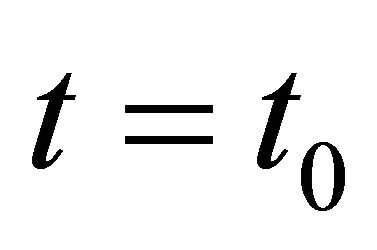 ,
,

This, with Equation (48) gives
 (66)
(66)
Now, at any time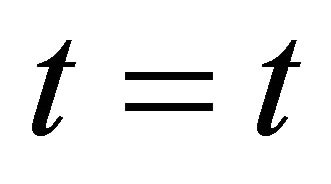 , let a sphere concentric with the 3-sphere of the universe is of radius
, let a sphere concentric with the 3-sphere of the universe is of radius  and have the density
and have the density . Then the mass of this sphere is
. Then the mass of this sphere is
 , where
, where .
.
Let another concentric sphere of radius  be considered. The density of this sphere can, for all practical purposes, be taken as
be considered. The density of this sphere can, for all practical purposes, be taken as , since
, since  is infinitesimally small. Then,
is infinitesimally small. Then,  , the mass of this sphere is:
, the mass of this sphere is: , neglecting higher powers of
, neglecting higher powers of  than one. So,
than one. So,  .
.
Then, the average speed of the entire mass of the 3-sphere of the universe is:

where  is the speed of the galaxies at a distance
is the speed of the galaxies at a distance  from the observer, or for all practical purposes, the speed of matter within the spherical shell, having the outer and inner radii
from the observer, or for all practical purposes, the speed of matter within the spherical shell, having the outer and inner radii  and
and  respectively. so,
respectively. so,

So, by Equation (40),  , whence
, whence
 (67)
(67)
Therefore,
 (68)
(68)
Now, Equation (58) implies: 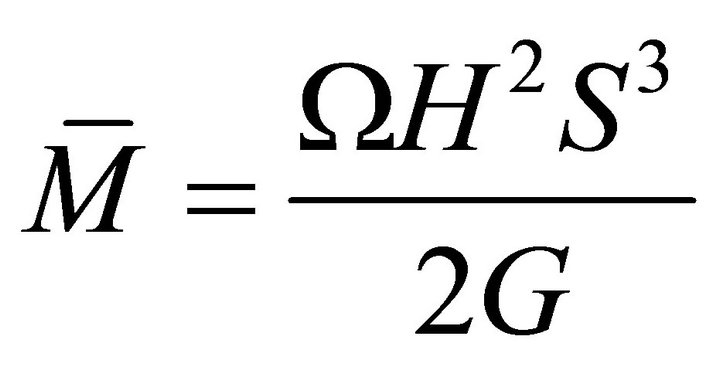
As , by Equation (68), the above becomes:
, by Equation (68), the above becomes:

Replacement of  by
by  changes this to:
changes this to:
 (69)
(69)
At , this becomes:
, this becomes:
 (70)
(70)
Equations (37) and (48) together give  . Values of
. Values of  and
and  are taken from Subsection 1.2 and
are taken from Subsection 1.2 and  from Equation (50). With these values, Equation (70) gives
from Equation (50). With these values, Equation (70) gives

From this with the help of Equation (66),  and
and  are evaluated as given below:
are evaluated as given below:
 (71)
(71)
 (72)
(72)
3.4. Static Relation between  and
and 
The static relation between  and
and  is characterised by
is characterised by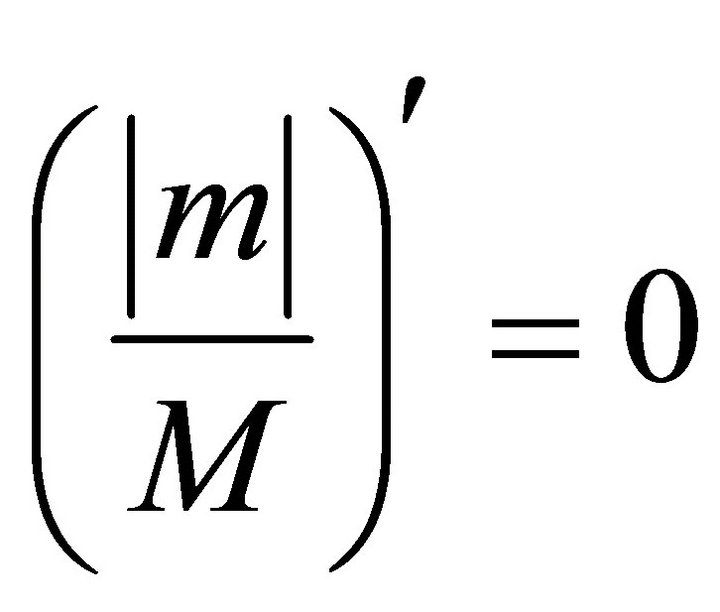 . This relation is obtained as follows:
. This relation is obtained as follows:
Equation (59) , whence
, whence
 (73)
(73)
This is the static relation. Then,
 (74)
(74)
This implies . Thus the criterion of static relation is fulfilled by Equation (73). Next, Equation (60)
. Thus the criterion of static relation is fulfilled by Equation (73). Next, Equation (60) , whence
, whence
 (75)
(75)
Thus Equations (74) and (75) do not agree, seemingly posing a problem. It will be seen in Subsection 3.7 that the dynamism of relation (75) originating from the static relation (74) is the solution to this problem.
3.5. Two Time Zones
The concept of two time zones is necessary to show that the dynamism of relation (75) originates from the static relation (74). This concept is there in the theory of Quantum Electrodynamics also. This theory will come up again in Subsection 3.7.
This concept necessitates introducing a new convention of denoting the time derivative and the indices of scalars as is given below. Suffices  (or,
(or, ) and
) and  (or,
(or, ) will be used under this convention.
) will be used under this convention.
1)  and
and  will respectively be denoted by
will respectively be denoted by 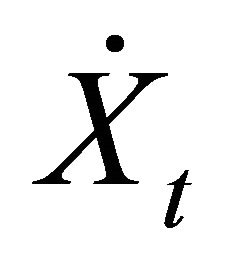 and
and .
.
2)  and
and  will respectively be denoted by
will respectively be denoted by 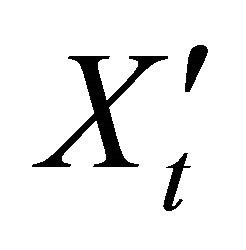 and
and .
.
Also, two relations between  and
and  are deduced below.
are deduced below.
a)

whence
 (76)
(76)
b) Equation (76) implies
 (77)
(77)
It must be mentioned here that all indices, occurring upto Subsection 3.4, are of the type 
Now, the static relation (73) , whence by Equation (76),
, whence by Equation (76),
 (78)
(78)
This is the fundamental relation between matter and antimatter. Also, as the natural time zone for matter is the Positive Time Zone (PTZ), Equation (78) shows that the same for antimatter is the Negative Time Zone (NTZ). Time is progressive in the PTZ and regressive in the NTZ.
Next, relation (73)  whence by Equation (76)
whence by Equation (76)
 (79)
(79)
3.6. The Time Barrier
The PTZ is defined as
 (80)
(80)
and the NTZ is defined as
 (81)
(81)
So, matter and antimatter, when in the PTZ, moves forward in time and when they are in the NTZ, they move backward in time. The only instant of time common to both PTZ and NTZ is:

Since matter and antimatter are trapped in the PTZ and the NTZ respectively when Equation (78) rules, matter cannot cross over to the NTZ as matter, and antimatter cannot cross over to the PTZ antimatter, and so there exists a “time barrier” (except ) to prevent matter and antimatter from meeting. So, antimatter cannot be sighted in the PTZ, when Equation (78) rules.
) to prevent matter and antimatter from meeting. So, antimatter cannot be sighted in the PTZ, when Equation (78) rules.
When Equation (79) rules, antimatter and matter appear in the PTZ and NTZ, not in the NTZ and PTZ respectively. Since they appear in their unusual time zones, their appearances must be extremely rare. So, extremely rare are the appearances of antimatter in the PTZ. Such rare appearances of antimatter result from chance phenomena like cosmic rays striking interstellar matter.
3.7. Conversion
Equation (78) is the result of the following transformation:
 (82)
(82)
This transformation means that matter in the PTZ gets converted to antimatter in the NTZ. So, antimatter increases at the cost of matter, that decreases [vide Equation (51)]. This is exactly what the dynamic relation (60) conveys. As transformation (82) originates from the static relation, the problem, that was faced in Subsection 3.4, vanishes.
Next, Equation (79) is the result of the following transformation
 (83)
(83)
This transformation shows that antimatter, which is in the PTZ and so moves forward in time, gets converted to matter, which is in NTZ and so moves backward in time [8]. In the theory of Quantum Electrodynamics also, antimatter moving forward in time is interpreted as matter moving backward in time.
3.8. Rarity of Antimatter
When Equation (78) rules, antimatter is hugely abundant in the NTZ at present, and because of the time barrier there is absolutely no chance of antimatter appearing in the PTZ and being detected. But when Equation (79) rules, antimatter appears in the PTZ. It has been explained in Subsection 3.6 that such appearances are extremely rare. Thus it is explained why antimatter is extremely rare in spite of its huge abundance.
4. Game Matter and Antimatter Play
4.1. The Three Fundamental Scalars
The three fundamental scalars (time, radius of the 3- sphere and mass), associated with antimatter, are related to the corresponding scalars, associated with matter, as given below.
 (84)
(84)
 (85)
(85)
 (86)
(86)
where the suffix “a” indicates association with antimatter.
4.2. Matter in the Expanding Universe
Equation (39) ; so, by Equation (23),
; so, by Equation (23),
 (87)
(87)
where
 (88)
(88)
Equation (39) also implies:
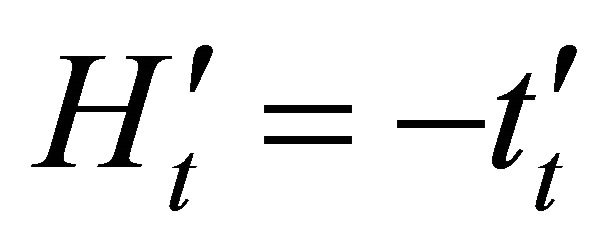 (89)
(89)
Now, Equation (12) 
So, by Equation (51),

whence
 (90)
(90)
Next, Equations (87) and (88) together imply:

whence
 (91)
(91)
By Equations (90) and (91)
 (92)
(92)
4.3. Antimatter in the Expanding Universe (Figure 1)
Equation (76)  whence
whence
 (93)
(93)
Equation (92) . So, by Equation (93),
. So, by Equation (93), .
.
Then, by Equation (77), this becomes:


Figure 1. In the figure all the Particles in the positive time zone represented by 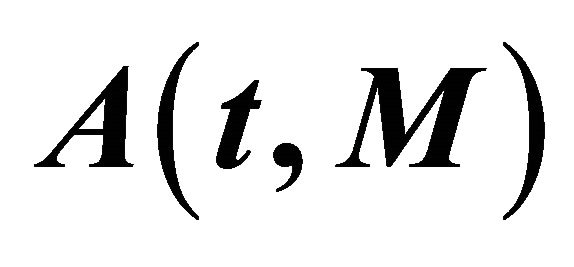 gets converted into the corresponding antiparticle in the negative time zone represented by
gets converted into the corresponding antiparticle in the negative time zone represented by .
.
or,  , whence
, whence .
.
Now, because the LHS  and the RHS
and the RHS ,
,  , where
, where  is a constant. Then,
is a constant. Then,  , whence
, whence
 (94)
(94)
4.4. How Antimatter Increases in the Expanding Universe
Let the four corners 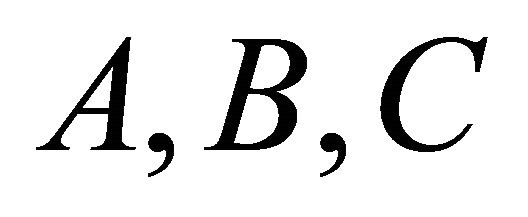 and
and  of a rectangular strip of paper represent respectively the paired scalars
of a rectangular strip of paper represent respectively the paired scalars  and
and , as shown in the figure. Then, transformations (82) and (83) can be written as below.
, as shown in the figure. Then, transformations (82) and (83) can be written as below.
 (95)
(95)
 (96)
(96)
Now, when this strip is given a single twist and the edge  is joined with the edge
is joined with the edge  in such a way that
in such a way that 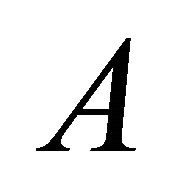 and
and  coincide with
coincide with  and
and  respectively, a Mobius strip is formed.
respectively, a Mobius strip is formed.
Then, transformations (95) and (96) together constitute a Mobius transformation operating within the universe [9]. So, under this built-in Mobius transformation in the universe, particles (in the PTZ), represented by , undergo conversion to the corresponding antiparticles (in the NTZ), represented by
, undergo conversion to the corresponding antiparticles (in the NTZ), represented by . Plenty of matter in the universe ensures “continual” conversion of matter to antimatter. Such a scenario supports Equation (60) as well as the pair of Equations (92) and (94) taken together.
. Plenty of matter in the universe ensures “continual” conversion of matter to antimatter. Such a scenario supports Equation (60) as well as the pair of Equations (92) and (94) taken together.
4.5. Roles Played by Matter and Antimatter
Relation (92) shows that with advancing time, decreasing matter effects the expansion of the universe, while increasing antimatter effects its contraction [vide relation (94)]. Due to matter preponderating over antimatter during the expansion phase, the contraction remains eclipsed. So, 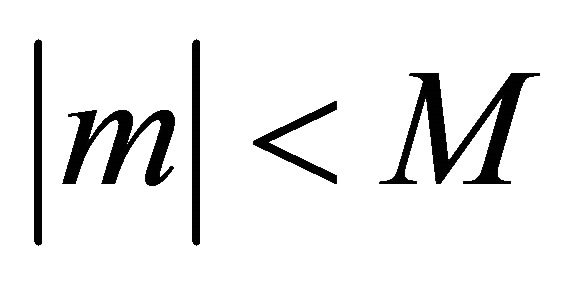 is symptomatic of the expansion of the universe. The universe will be on the threshold of inflecting into the contraction phase when
is symptomatic of the expansion of the universe. The universe will be on the threshold of inflecting into the contraction phase when
 (97)
(97)
4.6. The Moment of the Inflexion
Let the moment of inflexion be , and all the scalars at this moment have the suffix “T”. Then, by Equation (97),
, and all the scalars at this moment have the suffix “T”. Then, by Equation (97),
 . By Equation (60),
. By Equation (60), . So,
. So,
 (98)
(98)
Then, by Equations (71) and (72),
 (99)
(99)
Next, by Equation (51),  , or,
, or,
 .
.
or, 
Integration of this gives:  , where
, where  is the constant of integration.
is the constant of integration.
Now, since ,
,  and
and  . Also,
. Also, .
.
Then, ; or,
; or,
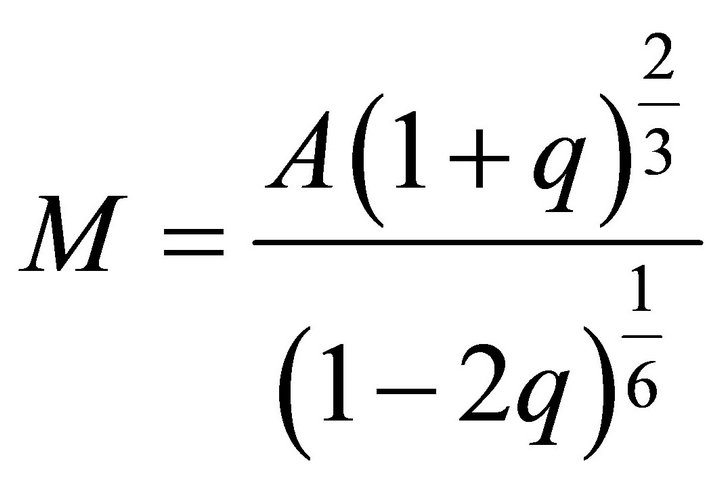 (100)
(100)
Then,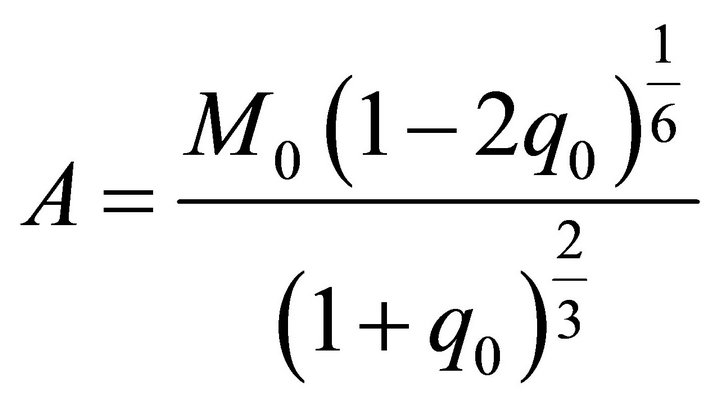 . By Equations (48) and (71),
. By Equations (48) and (71), . So,
. So,
 (101)
(101)
Next, let
 (102)
(102)
Then, by Equation (46),  , and by Equation (45),
, and by Equation (45), 
Then, . So,
. So,  .
.
By Equation (99), this becomes:
 (103)
(103)
By Equation (47), . Also,
. Also,  .
.
So, by Equation (102), . For this value of
. For this value of , Equation (103) gives:
, Equation (103) gives:
 (104)
(104)
So, inflexion occurs after  years from now.
years from now.
4.7. The Reversal of the “Arrow of Time”
Let in the post-inflexion period, time be denoted by  and other scalars have the suffix “c”. Also, let
and other scalars have the suffix “c”. Also, let 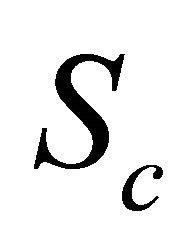 and
and  be the radii of the 3-sphere, and
be the radii of the 3-sphere, and  and
and  be the Hubble’s Constant therein at times
be the Hubble’s Constant therein at times 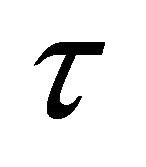 and
and  respectively.
respectively.  will indicate the reversal of the “Arrow of Time”.
will indicate the reversal of the “Arrow of Time”.
 moves from
moves from  to
to , while
, while  moves from
moves from  to
to . So, each value of
. So, each value of  must correspond to a unique value of
must correspond to a unique value of . So,
. So,
 (105)
(105)
Also, as the universe contracts,
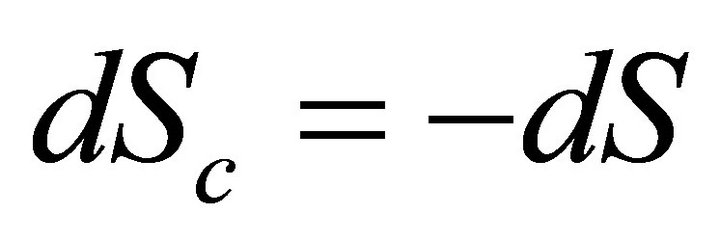 (106)
(106)
Next,  and
and , and so,
, and so,  . So,
. So,
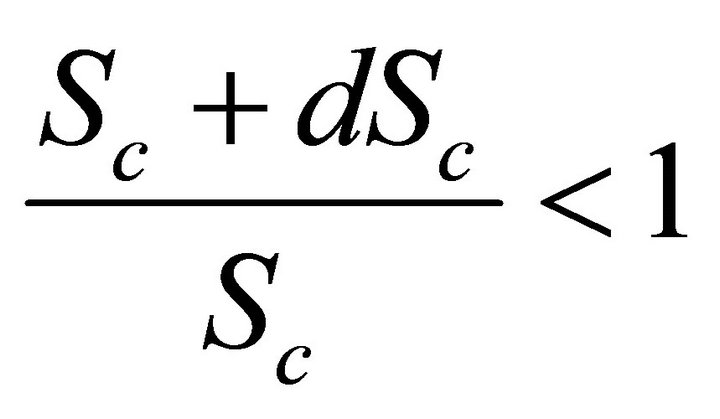 (107)
(107)
Also,
 (108)
(108)
Now, 

 where
where  is the constant of integration. Then, by Equation (108),
is the constant of integration. Then, by Equation (108), ; or,
; or,

Then,

So, by Equation (107),

Hence,

Differentiation of this with respect to  gives:
gives:
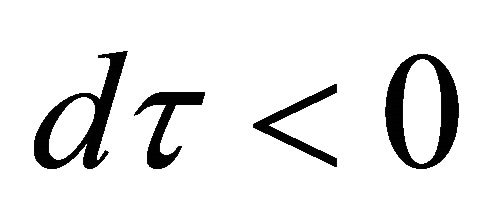 (109)
(109)
Next,  moves from
moves from 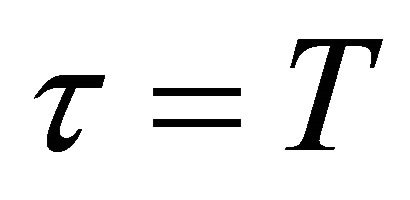 to
to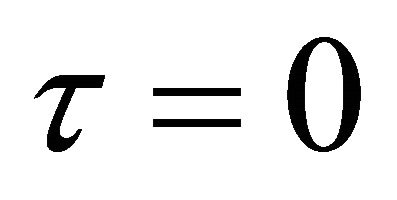 , while
, while  moves from
moves from  to
to . So, each value of
. So, each value of  must correspond to a unique value of
must correspond to a unique value of . So,
. So,
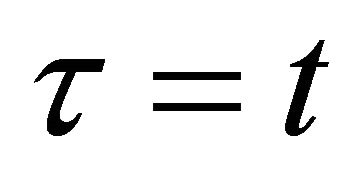 (110)
(110)
Then,  , or,
, or, . Inequality (109), so, indicates
. Inequality (109), so, indicates
 (111)
(111)
So, the “Arrow of Time” reverses at the moment of inflexion, i.e. at .
.
4.8. Matter in the Contracting Universe
Equation (92) is reproduced below:
 (112)
(112)
4.9. Antimatter in the Contracting Universe
Equation (94) is reproduced below:
 (113)
(113)
4.10. How Matter Increases in the Contracting Universe
Reversal of the “Arrow of Time” at  reverses the arrows of transformations (95) and (96) as shown below.
reverses the arrows of transformations (95) and (96) as shown below.
 (114)
(114)
 (115)
(115)
Antimatter decreases in the contracting universe with regressive time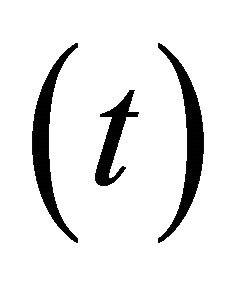 , as given in relation (113), while matter increases, as shown in relation (112). The disappearing antimatter is converted to matter by the transformation (114), which is part of the reversed inbuilt “Mobius transformation”, discussed in Subsection 4.4 and now reversed. As antimatter in the universe is plentiful, the conversion is “continual”, and matter increases at the cost of decreasing antimatter.
, as given in relation (113), while matter increases, as shown in relation (112). The disappearing antimatter is converted to matter by the transformation (114), which is part of the reversed inbuilt “Mobius transformation”, discussed in Subsection 4.4 and now reversed. As antimatter in the universe is plentiful, the conversion is “continual”, and matter increases at the cost of decreasing antimatter.
4.11. Back to 
Relation (112) implies that with regressive time increasing mass of matter effects contraction of the universe, while relation (113) shows that with regressive time decreasing mass of antimatter effects expansion of the universe. With the mass of matter preponderating over that of antimatter, contraction rules over expansion.
As time is regressive, it is back to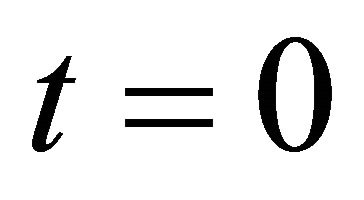 , when by relation (112),
, when by relation (112),  and
and , and by relation (113),
, and by relation (113), . Thus
. Thus  and
and  are back to their starting values at
are back to their starting values at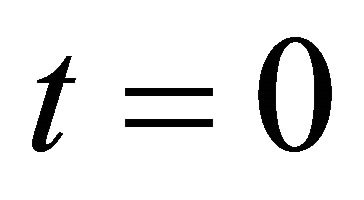 .
.
4.12. Symmetry between Matter and Antimatter
The universe, discussed so far, did not start with symmetry between matter and antimatter, nor this symmetry was there at any instant except at . Absence of this symmetry, because of the preponderance of matter over antimatter, denied antimatter a role, as important as the role of matter, in the workings of the universe.
. Absence of this symmetry, because of the preponderance of matter over antimatter, denied antimatter a role, as important as the role of matter, in the workings of the universe.
In the next section, the concept of the “Antiworld” is introduced and it is shown that symmetry between matter and antimatter is never disturbed.
5. The ANTIWORLD
5.1. What the ANTIWORLD Is
The ANTIWORLD is the mirror image of the WORLD. It is like the WORLD except that the fundamental scalar therein, having the subscript “A” in their denotations, bear the following relations with those in the WORLD, having no subscript in their denotations.
 (116)
(116)
 (117)
(117)
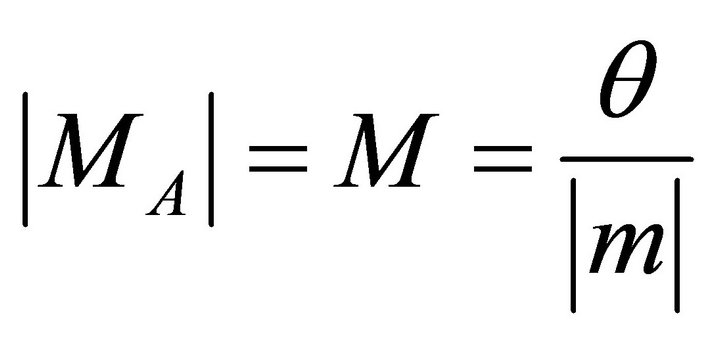 (118)
(118)
 (119)
(119)
where by Equation(60), 
5.2. Isolation of Two WORLDS from Each Other
Time  in the ANTIWORLD is, by Equation (116) negative. It advances from
in the ANTIWORLD is, by Equation (116) negative. It advances from  to
to . So, its range is:
. So, its range is:
 (120)
(120)
On the other hand, time  in the WORLD is positive and advances from
in the WORLD is positive and advances from  to
to , its range being
, its range being
 (121)
(121)
These two ranges show that neither of the WORLDS has in the other’s range, and so the WORLD has no past beyond , or the ANTIWORLD has no past beyond
, or the ANTIWORLD has no past beyond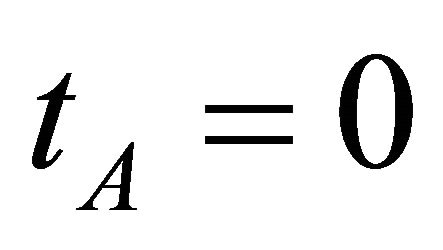 . This means that except at
. This means that except at , the two WORLDS are completely isolated from each other by this time barrier.
, the two WORLDS are completely isolated from each other by this time barrier.
5.3. The ANTIWORLD Is Expanding with the WORLD
The relation between , the Hubble’s Constant in the ANTIWORLD, and
, the Hubble’s Constant in the ANTIWORLD, and , that in the WORLD, is obtained, using Equations (116) and (117), as is given below.
, that in the WORLD, is obtained, using Equations (116) and (117), as is given below.

By Equation (77),  , and so,
, and so, 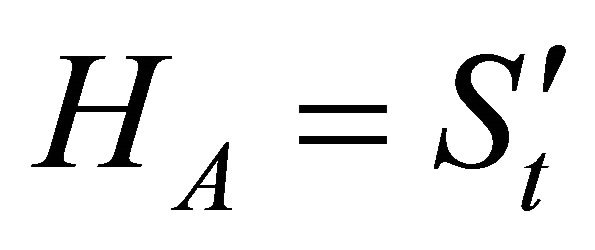 , whence
, whence
 (122)
(122)
This shows that the ANTIWORLD expands from  (at
(at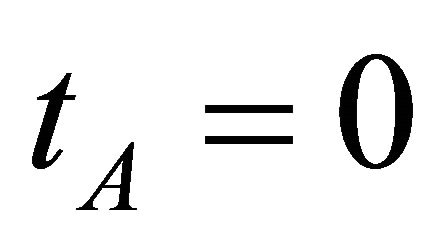 ) to
) to  (at
(at ) along with the WORLD, which expands from
) along with the WORLD, which expands from  at
at  to
to  at
at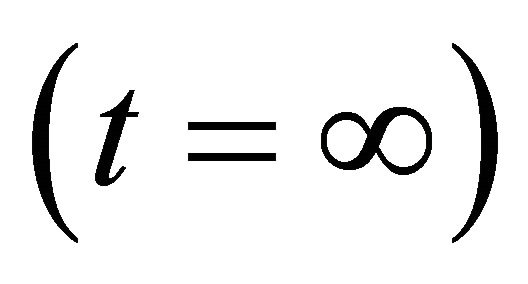 .
.
As at ,
,  and growth rates of
and growth rates of  and
and  are equal (vide Equation (122)),
are equal (vide Equation (122)),  at any instant
at any instant  in the WORLD implies
in the WORLD implies  at
at  in the ANTIWORLD. That is, at
in the ANTIWORLD. That is, at , the ANTIWORLD is exactly at that stage of expansion, whereat the WORLD is at
, the ANTIWORLD is exactly at that stage of expansion, whereat the WORLD is at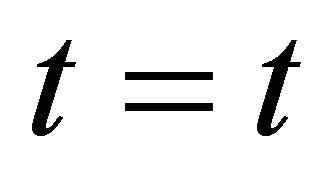 .
.
5.4. Antimatter in the Expanding ANTIWORLD
Equation (94) implies . Then, by Equation (77),
. Then, by Equation (77), 

 . Of this, the L.H.S.
. Of this, the L.H.S.  and the R.H.S.
and the R.H.S. , and so,
, and so,  , where
, where  is a constant. Then,
is a constant. Then, ; or,
; or, ; or,
; or,  , whence
, whence
 (123)
(123)
5.5. Matter in the Expanding ANTIWORLD
Equation (92) implies . Then, by Equation (77),
. Then, by Equation (77), 

 , whence
, whence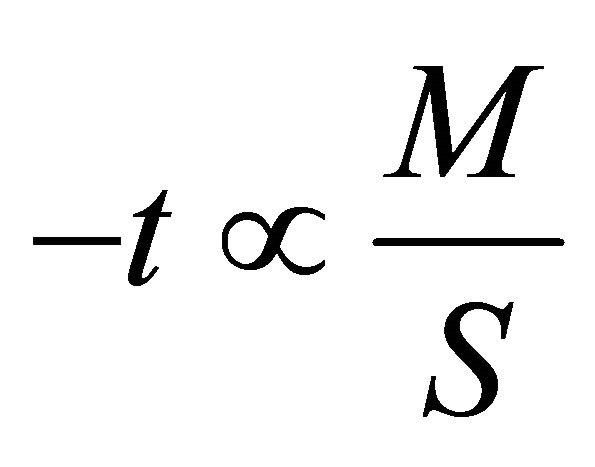 . The L.H.S. of this
. The L.H.S. of this , and the R.H.S.
, and the R.H.S. , and so,
, and so,  , where
, where  is a constant. Then,
is a constant. Then,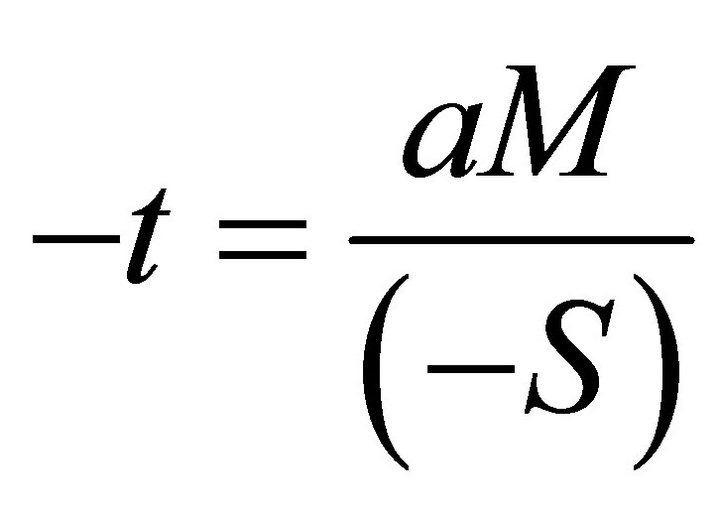 ; or,
; or,  ; whence
; whence
 (124)
(124)
5.6. How Matter Increases in the Expanding ANTIWORLD
Let the points ,
,  ,
,  , and
, and  in the figure of Subsection 4.4 be represented in the ANTIWORLD by
in the figure of Subsection 4.4 be represented in the ANTIWORLD by ,
,  ,
,  , and
, and  respectively. Then, transformation (95) implies:
respectively. Then, transformation (95) implies:

whence,
 (125)
(125)
Next, the transformation (96) implies:

whence,
 (126)
(126)
Now, let ,
,  ,
, 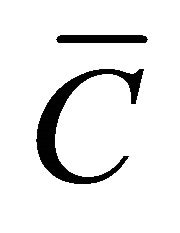 ,
,  be the four corners of a rectangular strip of paper. When this strip is given a single twist and the edge
be the four corners of a rectangular strip of paper. When this strip is given a single twist and the edge 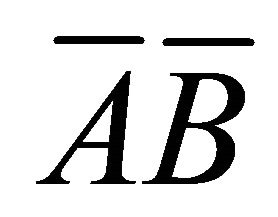 is joined with the edge
is joined with the edge  in such a way that
in such a way that  and
and  coincide with
coincide with  and
and 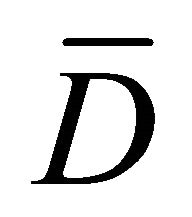 respectively, a Mobius strip is formed.
respectively, a Mobius strip is formed.
Then, transformations (125) and (126) together constitute a Mobius transformation, operating within the ANTIWORLD. So, under this built-in system of Mobius transformation, anti-particles (in the NTZ) represented by  undergo conversion to the corresponding particles (in the PTZ) represented by
undergo conversion to the corresponding particles (in the PTZ) represented by . Plenty of antimatter in the ANTIWORLD ensures “continual” conversion of antimatter to matter. Such a scenario supports Equation (60) as well as Equations (123) and (124).
. Plenty of antimatter in the ANTIWORLD ensures “continual” conversion of antimatter to matter. Such a scenario supports Equation (60) as well as Equations (123) and (124).
As matter is very rare in the NTZ, transformation (126) rarely occurs.
5.7. Symmetry between Matter and Antimatter during Expansion
Equation (123) shows that in the ANTIWORLD, at . Also, Equation (92) shows that in the WORLD, at
. Also, Equation (92) shows that in the WORLD, at  So,
So,  in the ANTIWORLD and
in the ANTIWORLD and  in the WORLD have the same initial values.
in the WORLD have the same initial values.
Next, . So, by Equation (118),
. So, by Equation (118),

So,  , whence
, whence
 (127)
(127)
This means that the growth rates of  in the ANTIWORLD and
in the ANTIWORLD and  in the WORLD are equal.
in the WORLD are equal.
The initial value and growth rate of  in the ANTIWORLD being correspondingly equal to those of
in the ANTIWORLD being correspondingly equal to those of 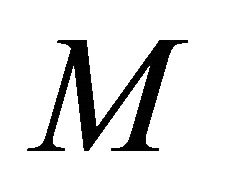 in the WORLD implies that the value of
in the WORLD implies that the value of  at any instant
at any instant 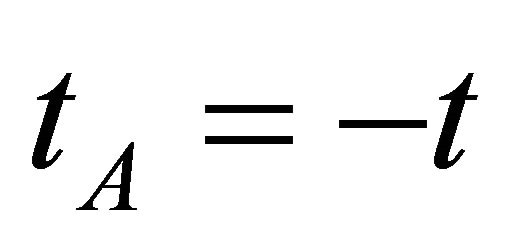 equals that of
equals that of  at the corresponding instant
at the corresponding instant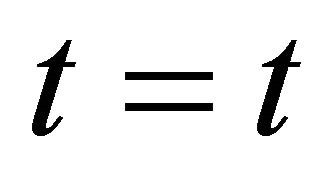 . That is
. That is
 (128)
(128)
Next, Equation (124) shows that in the ANTIWORLD at . Also, Equation (94) shows that in the WORLD, at
. Also, Equation (94) shows that in the WORLD, at . That is,
. That is,  in the ANTIWORLD and
in the ANTIWORLD and  in the WORLD have the same initial values.
in the WORLD have the same initial values.
Application of Equations (76) and (77) on Equation (127) gives:
 ; or,
; or, ; or,
; or, ; or,
; or, 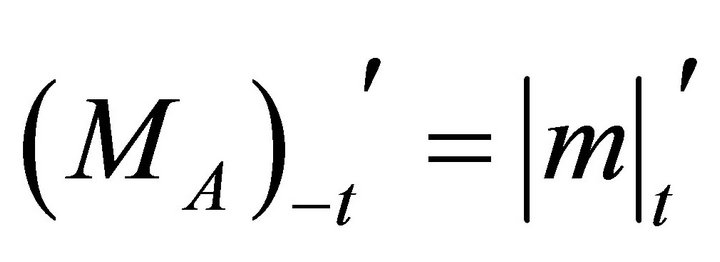 whence
whence
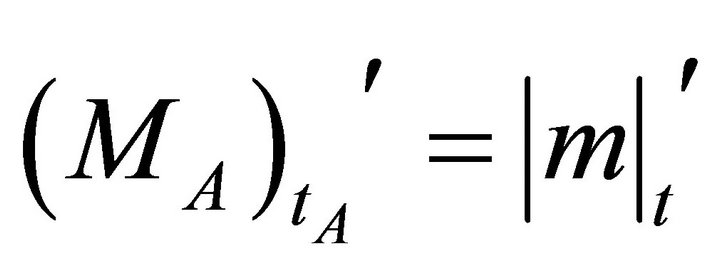 (129)
(129)
This means that growth rates of  in the ANTIWORLD
in the ANTIWORLD  in the WORLD are equal.
in the WORLD are equal.
The initial values and growth rates of  in the ANTIWORLD being correspondingly equal to those of
in the ANTIWORLD being correspondingly equal to those of  in the WORLD implies that the value of
in the WORLD implies that the value of  at any instant
at any instant  equals that of
equals that of  at the corresponding instant
at the corresponding instant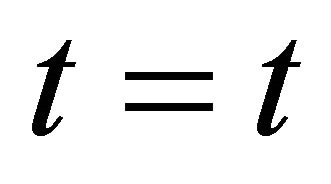 . That is,
. That is,  , whence
, whence
 (130)
(130)
Addition of Equations (128) and (130) gives:
 (131)
(131)
This shows that symmetry between matter and antimatter is maintained throughout the expansion phase of the universe.
5.8. Roles Played by Antimatter and Matter in the ANTIWORLD
Equation (123) implies that with progressive time  decreasing antimatter effects expansion of the ANTIWORLD, while Equation (124) implies that with progressive time increasing matter effects contraction of the ANTIWORLD.
decreasing antimatter effects expansion of the ANTIWORLD, while Equation (124) implies that with progressive time increasing matter effects contraction of the ANTIWORLD.
In the WORLD, matter preponderates over antimatter, i.e. . So, by Equations (128) and (130), this becomes
. So, by Equations (128) and (130), this becomes , which conveys that in the ANTIWORLD antimatter preponderates over matter. Then,
, which conveys that in the ANTIWORLD antimatter preponderates over matter. Then,  is indicative of the expansion of the ANTIWORLD, which will be on the threshold of inflecting into the contraction phase when
is indicative of the expansion of the ANTIWORLD, which will be on the threshold of inflecting into the contraction phase when
 (132)
(132)
5.9. The Moment of Inflexion
It has been seen in Subsection 4.6 that the WORLD inflects into the contraction phase at , when
, when
 (133)
(133)
Equations (128) and (130) for  are respectively
are respectively
 (134)
(134)
and
 (135)
(135)
Equations (133) and (135) together give:
 (136)
(136)
This, with Equation (134), gives:
 (137)
(137)
This, read with Equation (132), shows that the ANTIWORLD inflects into the contraction phase when . The mass of antimatter as well as that of matter at
. The mass of antimatter as well as that of matter at  is given by:
is given by:
 (138)
(138)
5.10. The Reversal of the “Arrow of Time”
Let in the post-inflexion period, scalars have the suffix “ ”. Also, let
”. Also, let  and
and  be the radii of the 3-sphere, and
be the radii of the 3-sphere, and  and
and  be the Hubble’s Constant therein at times
be the Hubble’s Constant therein at times  and
and  respectively.
respectively.  will indicate the reversal of the “Arrow of Time”.
will indicate the reversal of the “Arrow of Time”.
 moves from
moves from 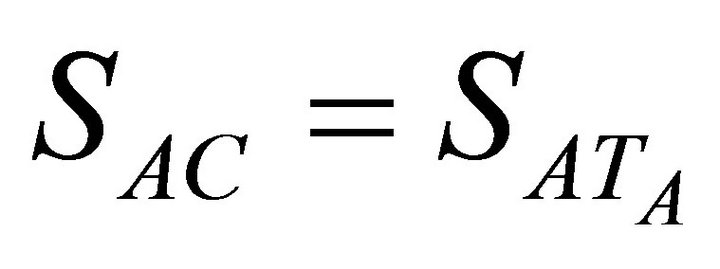 to
to , while
, while  moves from
moves from  to
to . So, each value of
. So, each value of  must correspond to a unique value of
must correspond to a unique value of . Then,
. Then,
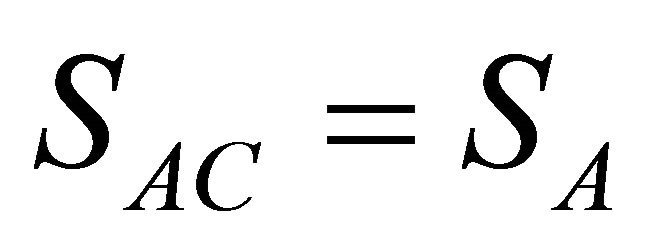 (139)
(139)
Also, as the ANTIWORLD contracts,
 (140)
(140)
As  and
and ;
; 
 , and so,
, and so,

Then ,
,
whence
 (141)
(141)
Next, . As
. As  ,
, . So,
. So, 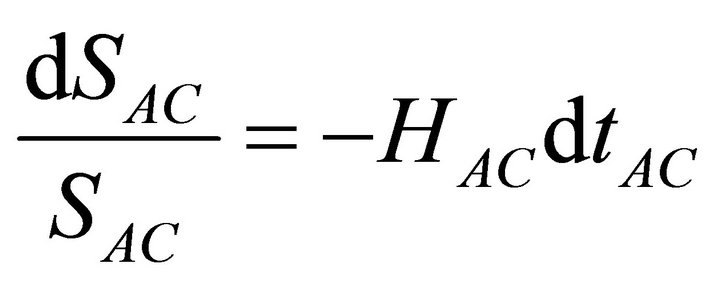 . On integration, this yields:
. On integration, this yields:

where  is the constant of integration. Then,
is the constant of integration. Then,

So,

Therefore,

which implies:  or,
or,  whence,
whence,

Differentiation of this with respect to  yields:
yields:
 (142)
(142)
Now,  moves from
moves from 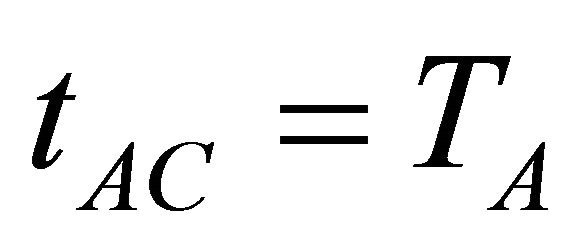 to
to , while
, while  moves from
moves from 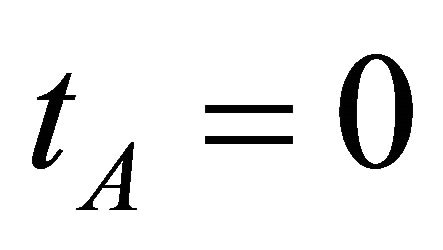 to
to . So, each value of
. So, each value of 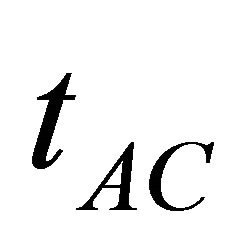 must correspond to a unique value of
must correspond to a unique value of . So,
. So,
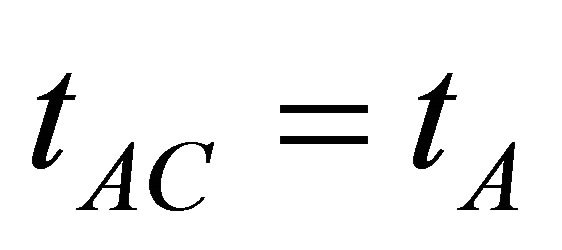 (143)
(143)
Then, either ; or,
; or, .
.
In the former case,  , which contradicts Equation (140). So,
, which contradicts Equation (140). So,
 (144)
(144)
This indicates that there is the reversal of the “Arrow of Time” at .
.
5.11. Antimatter in the Contracting ANTIWORLD:
Equation (123) is reproduced below:
 (145)
(145)
5.12. Matter in the Contracting ANTIWORLD
Equation (124) is reproduced below:
 (146)
(146)
5.13. How Antimatter Increases in the Contracting ANTIWORLD
With the reversal of the “Arrow of Time”, the arrow of the transformation (125) gets reversed as follows:
 (147)
(147)
Matter decreases in the contracting ANTIWORLD with regressive time , as given in relation (146), while antimatter increases, as shown in relation (145). The disappearing matter is converted to antimatter by the transformation (147), which is a part of reversed in-built “Mobius transformation” discussed in Subsection 5.6 and now reversed.
, as given in relation (146), while antimatter increases, as shown in relation (145). The disappearing matter is converted to antimatter by the transformation (147), which is a part of reversed in-built “Mobius transformation” discussed in Subsection 5.6 and now reversed.
As matter in the ANTIWORLD is plentiful, the conversion is continual, and antimatter increases at the cost of decreasing matter.
5.14. Back to 
Relation (145) implies that with regressive time increasing mass of antimatter effects contraction of the ANTIWORLD, while relation (146) shows that with regressive time decreasing mass of matter effects its expansion. With the mass of antimatter preponderating over that of matter, contraction rules over expansion.
As time is regressive, it is back to , when, by relation (145),
, when, by relation (145),  and
and , and by relation (146),
, and by relation (146), . Thus,
. Thus,  and
and  are back to their starting values at
are back to their starting values at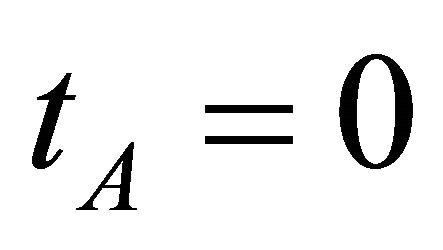 .
.
5.15. Symmetry between Matter and Antimatter during Contraction Phase
Equation (145) shows that in the ANTIWORLD at ,
, . Also, Equation (112) shows in the WORLD at
. Also, Equation (112) shows in the WORLD at . So,
. So,  in the ANTIWORLD and
in the ANTIWORLD and 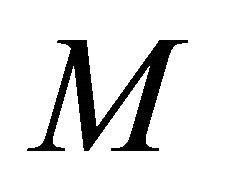 in the WORLD have the same initial values.
in the WORLD have the same initial values.
Next, Equation (127) shows that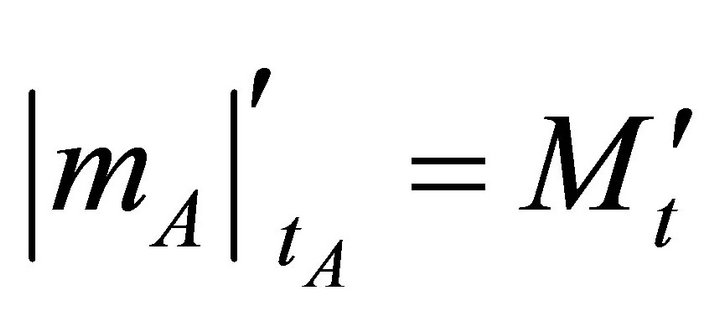 , i.e., the growth rates of
, i.e., the growth rates of  in the ANTIWORLD and
in the ANTIWORLD and  in the WORLD are equal.
in the WORLD are equal.
The initial value and growth rate of  being correspondingly equal to those of
being correspondingly equal to those of  implies that the value of
implies that the value of  at any instant
at any instant  equals that of
equals that of  at the corresponding instant
at the corresponding instant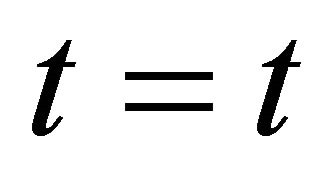 . That is,
. That is,
 (148)
(148)
Next, Equation (146) shows that at . Also, Equation (113) shows that at
. Also, Equation (113) shows that at . That is,
. That is,  in the ANTIWORLD and
in the ANTIWORLD and  in the WORLD have the same initial value.
in the WORLD have the same initial value.
Application of Equation (77) on Equation (127) gives:

whence
 (149)
(149)
The initial value and growth rate of  in the WORLD being correspondingly equal to those of
in the WORLD being correspondingly equal to those of  in the ANTIWORLD implies that the value of
in the ANTIWORLD implies that the value of 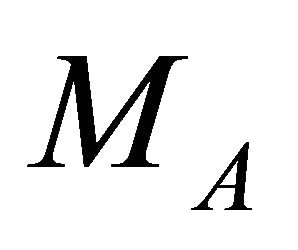 at any instant
at any instant  equals that of
equals that of  at the corresponding instant
at the corresponding instant . That is
. That is , whence
, whence
 (150)
(150)
Addition of Equations (148) and (150) gives:
 (151)
(151)
This shows that the symmetry between matter and antimatter is maintained throughout the contraction phase of the universe.
It has been proved in subsection 5.7 that this symmetry is maintained throughout the expansion phase of the universe. So, this symmetry is absolute in the universe.
6. The Big Bang
At  in the WORLD at the end of the contraction phase, by Equation (112),
in the WORLD at the end of the contraction phase, by Equation (112),  and
and , and by Equation (113),
, and by Equation (113),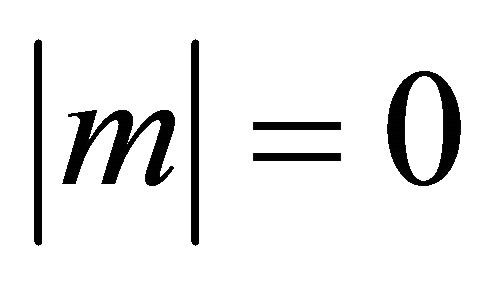 .
.
At  in the ANTIWORLD at the end of the contraction phase, by Equation (145),
in the ANTIWORLD at the end of the contraction phase, by Equation (145),  , and by Equation (146),
, and by Equation (146), .
.
At , the time-barrier disappears for an instant, when an infinite mass of antimatter of the ANTIWORLD meets an infinite mass of matter of the WORLD at a point
, the time-barrier disappears for an instant, when an infinite mass of antimatter of the ANTIWORLD meets an infinite mass of matter of the WORLD at a point , triggering what is known as the BIG BANG, the violent encounter between infinite quantities of matter and antimatter.
, triggering what is known as the BIG BANG, the violent encounter between infinite quantities of matter and antimatter.
Instantaneously with the BIG BANG, the WORLD and the ANTIWORLD are thrown apart by an infinite repulsive force. The force is repulsive because the product,  , is negative, is infinite as each of
, is negative, is infinite as each of  and
and  is infinite and the distance between the two worlds is zero.
is infinite and the distance between the two worlds is zero.
7. Conclusion
This work presents a complete oscillatory cosmological scenario. It is proposed that the universe comprises a WORLD and an ANTIWORLD. Matter/antimatter operates in the positive time zone (PTZ)/negative time zone (NTZ) in both. Antimatter is rare in the WORLD, because its entry in the PTZ is forbidden by a time-barrier. It is assumed to have a negative mass and is abundant in the NTZ of the WORLD. It is successfully shown that decrease in matter/antimatter causes the accelerative expansion of the WORLD/ANTIWORLD. For the Friedman’s flat universe with the cosmological constant a theoretical evaluation of the deceleration parameter is  which is in agreement with
which is in agreement with  by assuming General Relativity or by using Supernova Ia data. It is proposed that a built in transformation in the WORLD/ANTIWORLD converts matter/antimatter (in the PTZ/NTZ) to antimatter/matter (in the NTZ/PTZ). The present study has also revealed that in the expanding WORLD/ANTIWORLD, decreasing matter/antimatter preponderates over increasing antimatter/matter till mass of matter and that of antimatter become equal. Then the WORLD/ANTIWORLD starts contracting, and the “Arrow of Time” reverses. Time moves back to
by assuming General Relativity or by using Supernova Ia data. It is proposed that a built in transformation in the WORLD/ANTIWORLD converts matter/antimatter (in the PTZ/NTZ) to antimatter/matter (in the NTZ/PTZ). The present study has also revealed that in the expanding WORLD/ANTIWORLD, decreasing matter/antimatter preponderates over increasing antimatter/matter till mass of matter and that of antimatter become equal. Then the WORLD/ANTIWORLD starts contracting, and the “Arrow of Time” reverses. Time moves back to , when mass of matter/antimatter of the WORLD/ANTIWORLD is infinite. The WORLD/ANTIWORLD with infinite mass of matter/antimatter meets at
, when mass of matter/antimatter of the WORLD/ANTIWORLD is infinite. The WORLD/ANTIWORLD with infinite mass of matter/antimatter meets at , when the timebarrier lifts for an instant, to trigger the BIG BANG, the violent encounter between matter and antimatter. It has also been established that the symmetry between matter and antimatter in the universe is maintained throughout.
, when the timebarrier lifts for an instant, to trigger the BIG BANG, the violent encounter between matter and antimatter. It has also been established that the symmetry between matter and antimatter in the universe is maintained throughout.
8. Acknowledgements
SM wishes to acknowledge that the originality of this paper rests solely with SKBT. The ideas put forth in the paper have their foundation based mainly on these books [10-15].
REFERENCES
- A. Einstein, “The Meaning of Relativity,” Oxford and IBH Publishing Co., Oxford, 1965.
- J. V. Narlikar, “Introduction to Cosmology,” Cambridge University Press, New York, 2002.
- V. Rydnik, “ABC of Quantum Mechanics,” Mir Publishers, Moscow, 1968.
- S. Hawking, “A Brief History of Time,” Bantam Books, 1988.
- A. J. van de Ven Antoine, “Antimatter with Negative Mass as a Candidate for Dark Energy,” The Dark Universe Conference, Heidelberg, 4-7 October 2011.
- A. J. van de Ven Antoine, “A Space-Time Formalism with Negative Mass to describe Antimatter and Dark Energy.”
- H. Bondi, “Negative Mass in General Relativity,” Reviews of Modern Physics, Vol. 29, No. 3, 1957, pp. 423-428. doi:10.1103/RevModPhys.29.423
- F. Capra, “The Tao of Physics,” Wildwoodc House, University Press Oxford, Oxford, 1975.
- S. Hawking and R. Penrose, “The Nature of Space and Time,” Oxford University Press, Cambridge, 1997.
- V. A. Ugarov, “Special Theory of Relativity,” Mir Publishers, Moscow, 1979.
- D. Griffiths, “Introduction to Elementary Particles,” John Wiley and Sons, New York, 1987. doi:10.1002/9783527618460
- S. W. Hawking and G. F. R. Ellis, “The Large Scale Structure of Space-Time,” Cambridge University Press, Cambridge, 1973. doi:10.1017/CBO9780511524646
- P. S. Joshi, “Global Aspects in Gravitation and Cosmology,” Oxford University Press, Cambridge, 1979.
- R. M. Wald, “General Relativity,” University of Chicago Press, Chicago, 1984. doi:10.7208/chicago/9780226870373.001.0001
- M. Bartusiak, “Archives of the Universe,” Pantheon Books, New York, 2004.
NOTES
*Corresponding author.

